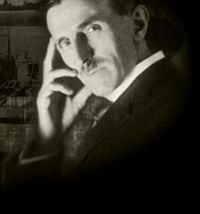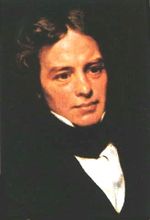Electricity
2007 Schools Wikipedia Selection. Related subjects: Electricity and Electronics
| Electromagnetism | |
| Electricity · Magnetism | |
| Electrostatics | |
|---|---|
| Electric charge | |
| Coulomb's law | |
| Electric field | |
| Gauss's law | |
| Electric potential | |
| Electric dipole moment | |
| Magnetostatics | |
| Ampère's law | |
| Magnetic field | |
| Magnetic dipole moment | |
| Electrodynamics | |
| Electric current | |
| Lorentz force law | |
| Electromotive force | |
| (EM) Electromagnetic induction | |
| Faraday-Lenz law | |
| Displacement current | |
| Maxwell's equations | |
| (EMF) Electromagnetic field | |
| (EM) Electromagnetic radiation | |
| Electrical Network | |
| Electrical conduction | |
| Electrical resistance | |
| Capacitance | |
| Inductance | |
| Impedance | |
| Resonant cavities | |
| Waveguides | |

Electricity (from ήλεκτρον [electron], "amber") is a general term for the variety of phenomena resulting from the presence and flow of electric charge. Together with magnetism, it constitutes the fundamental interaction known as electromagnetism. It includes many well-known physical phenomena such as lightning, electromagnetic fields and electric currents, and is put to use in industrial applications such as electronics and electric power.
In casual usage, the term electricity is applied to several related concepts that are better identified by more precise terms:
- Electric potential - the capacity of an electric field to do work, typically measured in volts.
- Electric current - a movement or flow of electrically charged particles, typically measured in amperes.
- Electric field - an effect produced by an electric charge that exerts a force on charged objects in its vicinity.
- Electrical energy - the energy made available by the flow of electric charge through an electrical conductor.
- Electric power - the rate at which electric energy is converted to or from another energy form, such as light, heat, or mechanical energy.
- Electric charge - a connection conserved property of some subatomic particles, which determines their electromagnetic interactions. Electrically charged matter is influenced by, and produces, electromagnetic fields.
History of electricity
Static electricity from rubbing objects against fur was known in ancient Greece and Parthian Mesopotamia. The Parthians and Mesopotamians may have had some knowledge of electroplating, based on the discovery of the Baghdad Battery, which resembles a Galvanic cell.
Benjamin Franklin conducted extensive research in electricity. He had theories on the relationship between lightning and static electricity, including his famous kite-flying experiment,which was a key attached to a wet string and kite. During a lightning storm a small spark struck his finger showing that lightning is electricity. It sparked the interest of later scientists whose work provided the basis for modern electrical technology. Most notably these include Luigi Galvani (1737–1798), Alessandro Volta (1745-1827), Michael Faraday (1791–1867), André-Marie Ampère (1775–1836), and Georg Simon Ohm (1789-1854). The late 19th and early 20th century produced such giants of electrical engineering as Nikola Tesla, Samuel Morse, Antonio Meucci, Thomas Edison, George Westinghouse, Werner von Siemens, Charles Steinmetz, Alexander Graham Bell and William Thomson, 1st Baron Kelvin.
Concepts in detail
Electric potential
The electric potential difference between two points is defined as the work done (against electrical forces) per unit of charge in moving a positive point charge slowly between two points. If one of the points is taken to be a reference point with zero potential, then the electric potential at any point can be defined in terms of the work done per unit charge in moving a positive point charge from that reference point to the point at which the potential is to be determined. For isolated charges, the reference point is usually taken to be infinity. The potential is measured in volts. (1 volt = 1 joule/ coulomb) The electric potential is analogous to temperature: there is a different temperature at every point in space, and the temperature gradient indicates the direction and magnitude of the driving force behind heat flow. Similarly, there is an electric potential at every point in space, and its gradient indicates the direction and magnitude of the driving force behind charge movement.
Electric Current
An electric current is a flow of electric charge, and its intensity is measured in amperes. Examples of electric currents include metallic conduction, where electrons flow through a conductor or conductors such as a metal wire, and electrolysis, where ions (charged atoms) flow through liquids. The particles themselves often move quite slowly, while the electric field that drives them propagates at close to the speed of light. See electrical conduction for more information.
Devices that use charge flow principles in materials are called electronic devices.
A direct current (DC) is a unidirectional flow, while an alternating current (AC) reverses direction repeatedly. The time average of an alternating current is zero, but its energy capability ( RMS value) is not zero.
Ohm's Law is an important relationship describing the behaviour of electric currents, relating them to voltage.
For historical reasons, electric current is said to flow from the most positive part of a circuit to the most negative part. The electric current thus defined is called conventional current. It is now known that, depending on the conditions, an electric current can consist of a flow of charged particles in either direction, or even in both directions at once. The positive-to-negative convention is widely used to simplify this situation. If another definition is used - for example, "electron current" - it should be explicitly stated.
Electric field
The concept of electric fields was introduced by Michael Faraday. The electrical field force acts between two charges, in the same way that the gravitational field force acts between two masses. However, the electric field is a little bit different. Gravitational force depends on the masses of two bodies, whereas electric force depends on the electric charges of two bodies. While gravity can only pull masses together, the electric force can be an attractive or repulsive force. If both charges are of same sign (e.g. both positive), there will be a repulsive force between the two. If the charges are opposite, there will be an attractive force between the two bodies. The magnitude of the force varies inversely with the square of the distance between the two bodies, and is also proportional to the product of the unsigned magnitudes of the two charges.
Electrical energy
Electrical energy is energy stored in an electric field or transported by an electric current. Energy is defined as the ability to do work, and electrical energy is simply one of the many types of energy. Examples of electrical energy include:
- the energy that is constantly stored in the Earth's atmosphere, and is partly released during a thunderstorm in the form of lightning
- the energy that is stored in the coils of an electrical generator in a power station, and is then transmitted by wires to the consumer; the consumer then pays for each unit of energy received
- the energy that is stored in a capacitor, and can be released to drive a current through an electrical circuit
Electric power
Electric power is the rate at which electrical energy is produced or consumed, and is measured in watts (symbol is: W).
A fossil-fuel, solar-thermal, nuclear or biomass power station converts heat to electrical energy, and the faster the station burns fuel, the higher its power output. The output of a power station is usually specified in megawatts (millions of watts). The electrical energy is then sent over transmission lines to reach the consumers.
Every consumer uses appliances that convert the electrical energy to other forms of energy, such as heat (in electric arc furnaces and electric heaters), light (in light bulbs and fluorescent lamps), or motion, i.e. kinetic energy (in electric motors). Like the power station, each appliance is also rated in watts, depending on the rate at which it converts electrical energy into another form. The power station must produce electrical energy at the same rate as all the connected appliances consume it.
In electrical engineering, the concepts of apparent power and reactive power are also used. Apparent power is the product of RMS voltage and RMS current, and is measured in volt-amperes (VA). Reactive power is measured in volt-amperes-reactive (VAr).
Non-nuclear electric power is categorized as either green or brown electricity.
Green power is a cleaner alternative energy source in comparison to traditional sources, and is derived from renewable energy resources that do not produce any nuclear waste; examples include energy produced from wind, water, solar, thermal, hydro, combustible renewables and waste. Some, however, argue that nuclear energy is also a form of "clean" energy, and is one of the many ways future generations will supply themselves with energy. Modern day nuclear power techniques have been able to greatly minimize nuclear waste output from nuclear plants.
Electricity from coal, oil, and natural gas is known as traditional power or "brown" electricity.
Electric charge
Electric charge is a property of certain subatomic particles (e.g., electrons and protons) which interacts with electromagnetic fields and causes attractive and repulsive forces between them. Electric charge gives rise to one of the four fundamental forces of nature, and is a conserved property of matter that can be quantified. In this sense, the phrase " quantity of electricity" is used interchangeably with the phrases "charge of electricity" and " quantity of charge". There are two types of charge: we call one kind of charge positive and the other negative. Through experimentation, we find that like-charged objects repel and opposite-charged objects attract one another. The magnitude of the force of attraction or repulsion is given by Coulomb's law.



